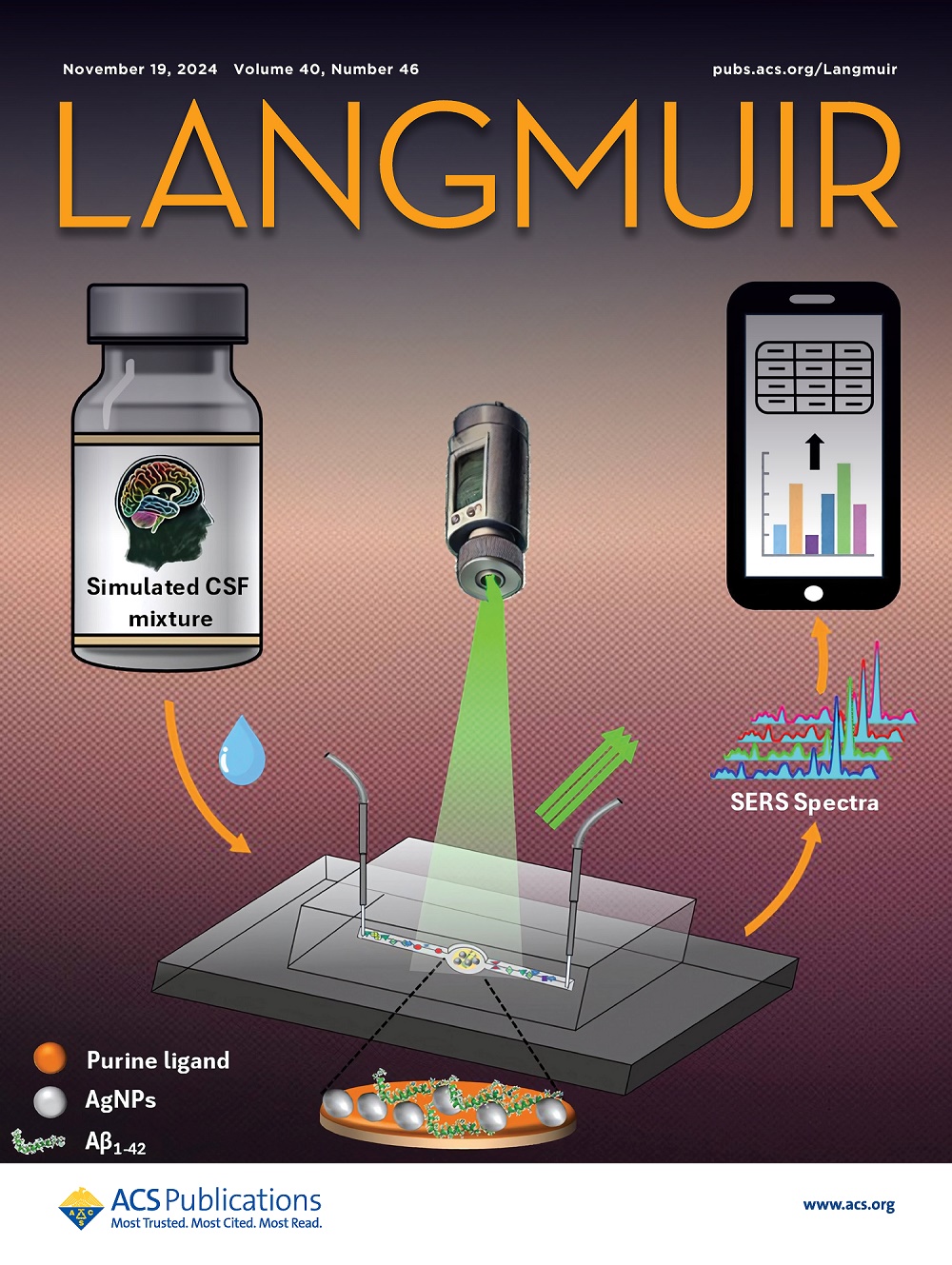Dye Extraction by Functionalized Magnetic Nanoparticles with Surfactants and Cyclodextrins through Specific and Host–Guest Interactions
IF 3.7
2区 化学
Q2 CHEMISTRY, MULTIDISCIPLINARY
引用次数: 0
Abstract
Functionalized magnetic nanoparticles (NPs) were synthesized by using different surfactants and cyclodextrins (CDs) for the extraction of toxic dyes from the aqueous bulk at room temperature to exploit the surfactant/CD–dye interactions operating at the solid–liquid interface. The extraction of dyes was monitored by UV–visible studies and quantitatively estimated. Both hexamethylene bis(hexadecyl dimethylammonium bromide) (16–6–16) and tris(2-(N-dodecyl N,N-dimethylammonio)ethylamine) tribromide (TriCAT) functionalized magnetic NPs proved to be excellent extractors, whereas extraction was highly facilitated at high or low pH when CD-functionalized magnetic NPs were used. Self-association among the dye molecules impeded the extraction. A combination of both polar as well as nonpolar along with dye–dye interactions participated in the extraction. Quantification was carried out by performing surface analysis of dye-loaded magnetic NPs. FTIR and XPS identified the functionalities participating in the extraction, whereas TEM, FESEM, and their EDS analyses determined the elemental composition. The amounts of N and S acted as fingerprinting elements for the adsorption of dyes at the solid–liquid interface, whereas overall amounts of C and O qualitatively differentiated among the relative amounts of dyes extracted. All results concluded that the extraction was much facilitated for those dyes which demonstrated a low degree of self-association in aqueous bulk and a high degree of solid–liquid interfacial adsorption.

功能化磁性纳米粒子与表面活性剂和环糊精通过特异性和主客体相互作用萃取染料
本文章由计算机程序翻译,如有差异,请以英文原文为准。
求助全文
约1分钟内获得全文
求助全文
来源期刊

Langmuir
化学-材料科学:综合
CiteScore
6.50
自引率
10.30%
发文量
1464
审稿时长
2.1 months
期刊介绍:
Langmuir is an interdisciplinary journal publishing articles in the following subject categories:
Colloids: surfactants and self-assembly, dispersions, emulsions, foams
Interfaces: adsorption, reactions, films, forces
Biological Interfaces: biocolloids, biomolecular and biomimetic materials
Materials: nano- and mesostructured materials, polymers, gels, liquid crystals
Electrochemistry: interfacial charge transfer, charge transport, electrocatalysis, electrokinetic phenomena, bioelectrochemistry
Devices and Applications: sensors, fluidics, patterning, catalysis, photonic crystals
However, when high-impact, original work is submitted that does not fit within the above categories, decisions to accept or decline such papers will be based on one criteria: What Would Irving Do?
Langmuir ranks #2 in citations out of 136 journals in the category of Physical Chemistry with 113,157 total citations. The journal received an Impact Factor of 4.384*.
This journal is also indexed in the categories of Materials Science (ranked #1) and Multidisciplinary Chemistry (ranked #5).
 求助内容:
求助内容: 应助结果提醒方式:
应助结果提醒方式:


